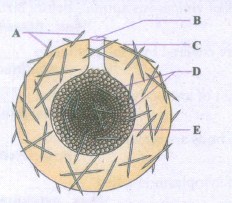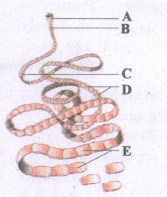- State Board
-
12th Standard
-

Biology
-

Computer Applications
-

Computer Science
-

Business Maths and Statistics
-

Commerce
-

Economics
-

Maths
-

Chemistry
-

Physics
-

Computer Technology
-

History
-

Accountancy
-

Tamil
-

Maths
-

Chemistry
-

Physics
-

Biology
-

Computer Science
-

Business Maths and Statistics
-

Economics
-

Commerce
-

Accountancy
-

History
-

Computer Applications
-

Computer Technology
-

English
12th Standard stateboard question papers & Study material
தமிழ் Subjects
English Subjects
-
-
11th Standard
-

Maths
-

Biology
-

உயிரியல் - தாவரவியல்
-

Economics
-

Physics
-

Chemistry
-

History
-

Business Maths and Statistics
-

Computer Science
-

Accountancy
-

Commerce
-

Computer Applications
-

Computer Technology
-

Tamil
-

Maths
-

Commerce
-

Economics
-

Biology
-

Business Maths and Statistics
-

Accountancy
-

Computer Science
-

Physics
-

Chemistry
-

Computer Applications
-

History
-

Computer Technology
-

Tamil
-

English
11th Standard stateboard question papers & Study material
தமிழ் Subjects
English Subjects
-
-
9th Standard
-

-

-

-

-

-

-

Maths
-

Science
-

Social Science
-

Maths
-

Science
-

Social Science
9th Standard stateboard question papers & Study material
தமிழ் Subjects
English Subjects
-
-
6th Standard
-

Maths
-

Science
-

Social Science
-

Maths
-

Science
-

Social Science
6th Standard stateboard question papers & Study material
தமிழ் Subjects
English Subjects
-
-
10th Standard
-

Maths
-

Science
-

Social Science
-

Tamil
-

Maths
-

Science
-

Social Science
-

English
-

English
10th Standard stateboard question papers & Study material
தமிழ் Subjects
English Subjects
-
-
7th Standard
-

Maths
-

Science
-

Maths
-

Science
-

Social Science
7th Standard stateboard question papers & Study material
தமிழ் Subjects
English Subjects
-
-
8th Standard
-

கணிதம் - old
-

Science
-

Social Science
-

கணிதம்
-

Maths
-

Science
-

Social Science
8th Standard stateboard question papers & Study material
தமிழ் Subjects
English Subjects
-
-
12th Standard
- CBSE Board
-
12th Standard CBSE
-

Biology
-

Chemistry
-

Physics
-

Maths
-

Accountancy
-

Business Studies
-

Economics
-

Introductory Micro and Macroeconomics
-

Computer Science
-

Geography
-

English
-

History
-

Indian Society
-

Physical Education
-

Sociology
-

Political Science
-

Engineering Graphics
-

Bio Technology
-

Entrepreneurship
-

Hindi Elective
-

Home Science
-

Legal Studies
-

Psychology
-

Hindi Core
-

Tamil
12th Standard CBSE Subject Question Paper & Study Material
-
-
11th Standard CBSE
-

Physics
-

Mathematics
-

Chemistry
-

Biology
-

Economics
-

Business Studies
-

Accountancy
-

Computer Science
-

English
-

Geography
-

History
-

Physical Education
-

Psychology
-

Sociology
-

Bio Technology
-

Enterprenership
-

Hindi
-

Home Science
-

Political Science
-

Applied Mathematics
11th Standard CBSE Subject Question Paper & Study Material
-
- 10th Standard CBSE
-
9th Standard CBSE
-

Social Science
-

Mathematics
-

Science
-

English
-

Hindi
9th Standard CBSE Subject Question Paper & Study Material
-
-
8th Standard CBSE
-

Social Science
-

Science
-

Mathematics
-

English
8th Standard CBSE Subject Question Paper & Study Material
-
-
7th Standard CBSE
-

Social Science
-

Science
-

Mathematics
-

English
7th Standard CBSE Subject Question Paper & Study Material
-
-
6th Standard CBSE
-

Social Science
-

Science
-

Mathematics
-

English
6th Standard CBSE Subject Question Paper & Study Material
-
-
12th Standard CBSE
- Free Online Test
- News
- Study Materials
-
Students
-

Stateboard Tamil Nadu
-

CBSE Board
-

Free Online Tests
-

Educational News
-

Scholarships
-

Entrance Exams India
-

Video Materials
Study Materials , News and Scholarships
-
-
Students

12th Standard English Medium Biology (Zoology) Subject Creative 1 Mark Questions with Solution Part - I updated Creative Questions Question Bank Software May-13 , 2022
QB365 provides detailed and simple solution for every Creative Questions in class 12 Biology Subject. It will helps to get more idea about question pattern in every Creative questions with solution.
latest Creative Questions12th Standard English Medium Biology (Zoology) Subject Creative 1 Mark Questions with Solution Part - I
12th Standard
-
Reg.No. :
Biology
Time :
01:00:00 Hrs
Total Marks :
25
-
During favourable conditions ______ shows multiple fission.
(a)Plasmodium
(b)Amoeba
(c)Planaria
(d)Euglena
-
Giant Amoeba refers to ______
(a)Opalina
(b)Pelomyxa
(c)Ceratium
(d)Trichonympha
-
Budding is seen in ______
(a)Noctiluca
(b)Amoeba
(c)Nostoc
(d)Planaria
-
If the entire organism behaves as a gamete the Phenomenon is called _____
(a)Autogamy
(b)Syngamy
(c)Morphallaxis
(d)Hologamy
-
Conjugation is seen in _____
(a)Vorticella
(b)Amoeba
(c)Reptiles
(d)Actinosphaerium
-
Human beings exhibit ______
(a)Hologamy
(b)Exogamy
(c)Isogamy
(d)Paedogammy
-
All of the following are methods of asexual reproduction except
(a)Regeneration
(b)Conjugation
(c)Sporulation
(d)Fragmentation
-
All the following animals are continuous breeders, except.
(a)Frogs
(b)Honey bees
(c)Poultry
(d)Rabbit
-
In honey bees, the unfertilized egg produces
(a)Queen bee
(b)Worker bee
(c)Drones
(d)Worker bee and male honey bee
-
The gravid proglottids are cut off from the parent body in ______
(a)Tapeworm (Taenia solium)
(b)Liver fluke
(c)Planaria
(d)Blood fluke
-
Regeneration was first studied in _______
(a)star fish
(b)Planaria
(c)Hydra
(d)Aurelia
-
The sexual union of young individuals produced immediately after the division of the parent Cell is called _____
(a)Paedogamy
(b)hologamy
(c)merogamy
(d)isogamy
-
Paedogenetic parthenogenesis is seen in ______
(a)planula larvae of enidarians
(b)Cydippid larvae of pleurobranchia
(c)Redia larvae of liver fluke
(d)Trochophore larvae of Annelids
-

Identify the correct option to label the diagram
1 - Archaeocytes
2 - Inner membrane
3 - Micropyle
4 - Outer membrane
5 - Monaxonspicules(a)1-A 2-D 3-B 4-C 5-E
(b)1-C 2-B 3-A 4-E 5-D
(c)1-D 2-E 3-B 4-C 5-A
(d)1-A 2-E 3-D 4-B 5-C
-

Identify the correct option to label the diagram Identify the structure
1- Immature proglottids
2 - Gravid proglottids
3 - Scolex
4 - Mature proglottids
5 - Neck(a)1-C 2-E 3-A 4-D 5-B
(b)1-B 2-D 3-C 4-E 5-A
(c)1-D 2-E 3-B 4-C 5-A
(d)1-A 2-E 3-D 4-B 5-C
-
A few statements describing certain features of reproduction are given below. Select the options that are true for both sexual and asexual reproduction from the options given:
(i) Gametic fusion takes place
(ii) Transfer of genetic material takes place
(iii) Reduction division takes place
(iv) Progeny have some resemblance, with parents(a)i and ii
(b)ii and iii
(c)ii and iv
(d)i and ii
-
Transverse binary fission is noticed in _________________
(a)Amoeba
(b)Planaria
(c)Ceratium
(d)Vorticella
-
Identify the wrong statement.
(a)Oviparous animals lays eggs.
(b)Viviparous animals give rise to young ones
(c)Ovoviviparous animals lays eggs and then hatch it to young ones.
(d)Amphibians are oviparous animals
-
Identify the mismatched pair.
(a)Paedogenesis - Liver fluke
(b)Strobilation - Aurelia
(c)Amphitoky - Honeybee
(d)Encystment - Amoeba
-
Assertion (A): Asexual reproduction is called blastogenic reproduction.
Reason (R): It is accomplished by mitotic and meiotic divisions.
Codes:
A. A and R are correct
B. A is correct but R is incorrect
C. Both A and R are incorrect
D. R is the correct explanation for A -
Assertion (A): The acrosome of the Sperm cell contains Sperm lysin.
Reason (R): Sperm lysin destroys the deformed Sperm cells.(a)R explains A
(b)A is right R is wrong
(c)A an R are right R does not explains A
(d)Both A and R are wrong
-
The whole process of spermatogenesis takes about ______ days.
(a)25
(b)42
(c)64
(d)72
-
The corpus luteum secretes large amount of ______
(a)testosterone
(b)relaxin
(c)oestrogen
(d)progesterone
-
Among the extra embryonic membranes the _____ is the outer most membrane.
(a)amnion
(b)chorion
(c)allantois
(d)vitelline membrane
-
Capacitation is a _____ event.
(a)physical
(b)biochemical
(c)both a and c
(d)Enzyme mediated
1 Marks
25 x 1 = 25






 12th Standard Biology Syllabus
12th Standard Biology Syllabus  12th Standard Biology Study Materials
12th Standard Biology Study Materials 12th Standard Biology MCQ Practise Tests
12th Standard Biology MCQ Practise Tests 

Reviews & Comments about 12th Standard English Medium Biology (Zoology) Subject Creative 1 Mark Questions with Solution Part - I updated Creative Questions
Write your Comment